Different Types of Knives Used in Cutting Meat
There are several types of knives used in cutting meat, including the chef’s knife, butcher knife, carving knife, and boning knife. These knives are specifically designed to handle different tasks, such as slicing, chopping, and separating meat from bones.
Each knife has a unique blade shape and size that enhances its functionality for specific meat-cutting purposes. Whether you are a professional chef or a home cook, having the right knives for cutting meat is crucial for achieving precise and efficient results.
With the proper knowledge and skill, using the right knife for the right task can significantly enhance your meat-cutting experience.
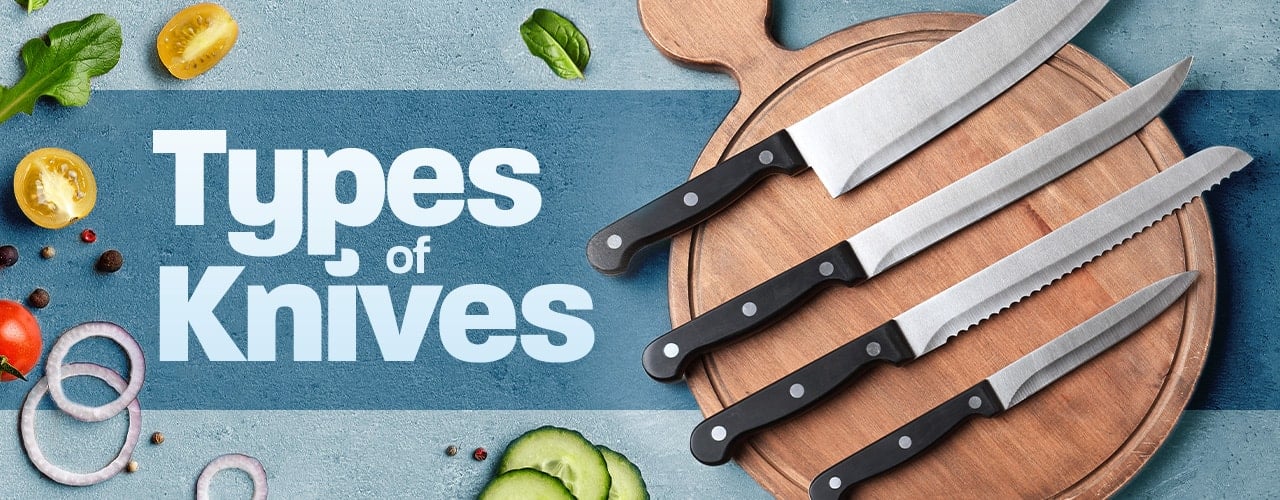
Credit: www.webstaurantstore.com
Importance Of Using The Right Knife For Meat Cutting
Understanding the importance of using the right knife for meat cutting involves knowing the different types of knives used. From the versatile chef’s knife to the precision of a boning knife, each serves a specific purpose in ensuring efficient and accurate meat preparation.
- When it comes to cutting meat, using the right knife is crucial for achieving optimal results. Different types of meat require different knives due to their varied textures, toughness, and bone structure. Understanding the significance of using appropriate knives is essential for any aspiring chef or home cook. Let’s delve into the reasons why.
How Using The Right Knife
- Using the right knife for meat cutting enhances not only precision but also efficiency in the kitchen. Here’s why:
- Blade Compatibility: Each knife is designed with a specific purpose in mind. When matched with a particular type of meat, the appropriate knife blade can effortlessly glide through the flesh, ensuring clean and precise cuts.
- Seamless Cutting Experience: Using a knife suitable for the specific meat being cut minimizes the effort required to slice through it. With the right knife in hand, the process becomes smooth and seamless, allowing for greater efficiency in the kitchen.
- Optimal Control: The proper knife for meat cutting ensures that you have complete control over each cut. It allows you to navigate around bones, tendons, and tough sections with ease, resulting in more accurate portions and reduced wastage.
- Reduced Risk of Injury: Using a knife that matches the meat being cut reduces the risk of mishaps in the kitchen. Blades specifically designed for certain cuts are less likely to slip, providing added safety while minimizing accidents and potential injuries.
Factors To Consider When Choosing A Knife For Meat Cutting
- Choosing the right knife for meat cutting involves considering various factors. Here are a few key points to keep in mind:
- Blade Type: Different types of meat require different blade designs for optimal results. Serrated blades work well for tougher cuts, such as roasts or crusty cuts, while straight-edged blades are suitable for precise slicing of tender meats like filets.
- Blade Length: Longer blades are ideal for larger cuts of meat, as they allow for longer, more confident strokes. Shorter blades, on the other hand, offer better control and are excellent for more intricate cuts.
- Handle Comfort: The comfort of the knife’s handle is crucial for extended periods of meat cutting. Look for a handle that feels comfortable and secure in your hand, minimizing fatigue and ensuring a comfortable grip.
- Quality Construction: Choose knives made from durable materials that maintain their sharpness over time. High-quality stainless steel or carbon steel blades are popular choices, as they exhibit excellent corrosion resistance and long-lasting sharpness.
Remember, using the appropriate knife for meat cutting not only enhances your culinary skills but also ensures a safer and more efficient cooking experience. Invest in high-quality knives that suit your needs and start exploring the world of meat cutting with precision and confidence.
Essential Knives For Cutting Different Types Of Meat
Different cuts of meat require specific knives for optimal slicing. From boning knives for removing bones to carving knives for precise cuts, having the right tools ensures a smooth cutting experience. Expertly crafted knives enhance the flavor and presentation of every meal.
The chef’s knife is a must-have tool in any kitchen, especially when it comes to cutting meat. Its versatility and sharpness make it perfect for various cutting tasks. Here are some key points about the chef’s knife:
- The chef’s knife is usually around 8 to 10 inches long with a wide and curved blade. It allows you to perform slicing, dicing, and mincing with ease.
- This knife is ideal for cutting different types of meat, including beef, pork, and poultry. Its sharp blade can easily handle thick cuts and tough textures.
- The curved shape of the blade allows for a rocking motion while cutting, providing precision and control.
- With the chef’s knife, you can trim fat, slice roasts, and chop meat into smaller pieces effortlessly.
- It’s important to choose a chef’s knife with a comfortable grip and a balanced weight to ensure better handling and reduce the risk of accidents.
- Proper maintenance and regular sharpening are essential to keep the chef’s knife in top condition for optimal performance.
The Boning Knife: Perfect For Deboning Meat
When it comes to deboning meat and removing tough connective tissue, the boning knife is the tool you need. Here are some key points about this specialized knife:
- The boning knife typically has a thin and flexible blade, usually around 6 inches long. Its design allows for precise control and maneuverability.
- This knife is specifically designed to remove bones from meat, making it ideal for deboning beef, pork, poultry, and fish.
- The narrow and sharp blade easily separates meat from bones, while the flexibility ensures minimal waste and maximum meat retrieval.
- The pointed tip of the boning knife helps navigate around joints and cartilage for clean and precise cuts.
- It’s important to choose a boning knife with a comfortable handle for prolonged use and better grip control.
- Regular cleaning and proper storage will keep the boning knife in excellent condition for safe and effective meat cutting.
The Carving Knife: Ideal For Slicing Large Cuts Of Roasted Meats
When you have a large, succulent roast that needs to be sliced with precision, the carving knife is your go-to tool. Here are some key points about the carving knife:
- The carving knife is typically long and slender, with a sharp and narrow blade, ranging from 8 to 12 inches. Its size and shape allow for thin and uniform slices of roasted meats.
- This knife is specifically designed for slicing cooked meats, such as turkey, chicken, beef, and ham.
- The long and thin blade reduces friction and tearing, resulting in clean and even slices.
- The sharpness of the carving knife enables smooth, effortless cutting, ensuring the meat retains its juices and flavors.
- It’s important to choose a carving knife with a comfortable handle for better control during slicing.
- Regular honing and sharpening will maintain the carving knife’s cutting performance and prolong its lifespan.
The Fillet Knife: Designed For Precise Cutting
When it comes to delicate tasks like filleting fish or poultry, the fillet knife is the tool you need. Here are some key points about this specialized knife:
- The fillet knife has a thin, flexible, and narrow blade, usually between 6 and 9 inches long. It’s specifically designed for precise and intricate tasks.
- This knife excels at removing skin, deboning, and filleting fish and poultry, ensuring minimal waste and clean cuts.
- The flexibility of the blade allows for delicate maneuvers around bones and joints, maximizing meat retrieval.
- The sharpness of the fillet knife ensures effortless cutting through delicate flesh without damaging the texture or presentation.
- It’s important to choose a fillet knife with a comfortable grip and a flexible blade for better control during filleting.
- Regular cleaning, drying, and storage will prolong the life and performance of the fillet knife.
The Cleaver: A Heavy-Duty Knife For Cutting Through Bones And Tough Meat
When it comes to cutting through bones and tough meat, the cleaver is the ultimate heavy-duty knife. Here are some key points about the cleaver:
- The cleaver has a large, rectangular, and thick blade, usually around 6 inches long. It’s a robust and powerful knife designed for heavy chopping and hacking.
- This knife is commonly used for cutting through bones, tenderizing meat, and tackling tough cuts like beef brisket or lamb shank.
- The weight and thickness of the cleaver’s blade provide momentum and force, making it easier to break bones and separate meat fibers.
- The flat side of the blade can be used for crushing garlic or ginger, while the spine can be used for meat pounding.
- It’s important to choose a cleaver with a sturdy handle and a well-balanced weight distribution for optimal control and safety.
- Regular cleaning, drying, and sharpening are crucial to maintain the cleaver’s cutting efficiency and longevity.
The Santoku Knife: A Japanese Knife Suitable For Various Meat Cutting Tasks
When it comes to versatility and precision in meat cutting tasks, the Santoku knife is a reliable choice. Here are some key points about this Japanese knife:
- The Santoku knife has a wide, flat blade with a slight curve towards the edge, usually around 5 to 7 inches long. It’s a multipurpose knife suitable for various cutting tasks, including meat.
- This knife is well-suited for slicing, dicing, and chopping meat, offering precision and control.
- The Granton edge, commonly found in Santoku knives, creates air pockets, reducing friction and allowing for easier food release during slicing.
- The sharpness and balance of the Santoku knife enable effortless cutting, especially when dealing with thinly sliced cuts of meat.
- It’s important to choose a Santoku knife with a comfortable handle and a well-maintained edge for optimal performance.
- Regular honing and sharpening will ensure the Santoku knife remains a reliable tool for meat cutting tasks.
Remember, each knife serves a unique purpose in the kitchen, catering to different cutting needs. Make sure to choose the right knife for the specific meat cutting task to achieve the best results.
Specialty Knives For Specific Meat Cutting Needs
Specialty knives designed for specific meat cutting needs cater to the diverse requirements of butchers and chefs. These knives, which include boning, fillet, and carving knives, offer superior precision and efficiency in meat preparation.
When it comes to cutting meat, having the right knife for the job can make all the difference in achieving the perfect slice or portion. From delicate cuts to breaking down large pieces of meat, there are specialty knives designed for specific meat cutting needs.
In this section, we will explore some of the most commonly used specialty knives and their unique functions. Let’s dive in:
The Bread Knife:
- Slices through crusty bread or delicate slices of meat effortlessly.
- Features a long, serrated blade that allows for smooth cutting without crushing the food.
- Perfect for achieving even slices of meat such as roast beef or turkey.
The Butcher Knife:
- Specifically designed for breaking down large cuts of meat.
- Features a hefty and broad blade with a sharp edge, ideal for cutting through tough meat and bones.
- Allows butchers and meat enthusiasts to handle larger portions with ease.
The Oyster Knife:
- Used to shuck and remove oysters from their shells.
- Features a short and sturdy blade with a pointed tip for easy insertion into the oyster shell.
- Allows for precise and safe oyster opening without damaging the delicate flesh inside.
The Meat Cleaver:
- Ideal for splitting and portioning meat into smaller cuts.
- Features a heavy and thick blade with a sharp edge, designed to deliver forceful chops.
- Perfect for breaking down larger pieces of meat or bone while maintaining accuracy.
The Salmon Knife:
- Perfect for slicing through delicate fish like salmon.
- Features a long and thin blade with a sharp edge, specifically crafted to minimize tearing.
- Ensures clean and precise slices, perfect for presentation and maintaining the integrity of the fish.
By having a range of specialty knives for specific meat cutting needs, you can effectively handle different types of meat with precision and ease. Whether you need to slice through crusty bread, break down large cuts of meat, shuck oysters, portion meat, or slice delicate fish like salmon, there is a knife designed to meet each unique requirement.
Invest in these specialty knives, and elevate your meat cutting experience to a whole new level.
Maintaining And Caring For Meat Cutting Knives
Different types of knives are used for cutting meat, and they require proper maintenance to ensure their longevity. Regular cleaning, sharpening, and storing in a safe place help keep these cutting tools in excellent condition for efficient meat preparation.
Proper Handling And Storage Techniques For Knives
- Always handle meat cutting knives with care to prevent accidents and injuries.
- Never leave knives unattended or within reach of children.
- Use a cutting board made of wood or plastic to protect the knife’s blade and maintain its sharpness.
- After using, clean and dry the knife thoroughly before storing it.
- Avoid using knives for tasks other than meat cutting to prevent damage or dulling of the blade.
- Store knives in a cool, dry place to avoid humidity and potential rusting.
- Properly position the knife in a knife block or sheath to prevent accidents and keep the blade protected.
- Ensure that knives are stored separately to avoid unnecessary contact and potential damage.
Regular Sharpening And Honing To Maintain Blade Sharpness
- Regularly sharpening your meat cutting knives ensures their efficiency and extends their lifespan.
- Use a sharpening stone or honing steel to sharpen the blade at the correct angle.
- Hold the knife with a firm grip and glide the blade against the sharpening tool using smooth and consistent strokes.
- Maintain a consistent angle and apply light pressure to avoid damaging the knife.
- Honing should be done regularly to straighten the blade and align the tiny imperfections on the edge.
- Perform honing before and after each use to ensure the blade remains sharp and precise.
Cleaning And Sanitizing To Prevent Cross-Contamination
- Thoroughly clean meat cutting knives after each use to prevent the spread of bacteria and cross-contamination.
- Use warm water, mild soap, and a non-abrasive sponge to remove any food residue.
- Pay extra attention to the handle and crevices where bacteria can hide.
- Rinse the knife thoroughly and dry it completely to prevent rusting.
- Avoid soaking the knife for extended periods as it can damage the handle and compromise the blade’s quality.
- Sanitize the knife with a solution of water and bleach to eliminate any remaining bacteria.
- Allow the knife to air dry completely before storage to prevent moisture buildup.
Storing Knives In A Knife Block Or Sheath For Safety
- Storing meat cutting knives properly is crucial for safety and maintaining their sharpness.
- Consider using a knife block or sheath designed specifically for storing knives.
- Knife blocks come in various sizes and designs, allowing you to organize and protect your knives efficiently.
- A knife sheath is a practical option when traveling or for additional protection.
- Make sure the knife is clean and dry before storing it in a block or sheath.
- Ensure each knife has its dedicated spot to avoid unnecessary contact and potential damage.
- Store the knife block or sheath in a location where children cannot access it.
- Regularly clean and inspect the storage solution to maintain optimal hygiene and keep the blades in top condition.
Tips For Choosing The Right Knife For Meat Cutting
Choosing the perfect knife for cutting meat can enhance your culinary experience. Mastering the different types of knives used in meat cutting, such as a chef’s knife, boning knife, or carving knife, can help you achieve precise, effortless cuts every time.
Consider the type of meat you typically cut and the specific tasks involved:
- Different types of meat require different knives for optimal cutting results. Consider the following factors when choosing a knife for meat cutting:
- Thickness and toughness of the meat: Some cuts of meat, like roasts or steaks, may require a heavier, thicker-bladed knife to handle the task. On the other hand, delicate cuts such as fish or poultry may require a lighter, more flexible blade.
- Bone-in or boneless: If you often cut through bones, such as when deboning poultry or trimming meat with bones, you will need a knife with a sturdy, durable blade that can withstand the pressure.
- Slicing or chopping: If you primarily slice meat into thin portions, a longer, narrower blade will be useful. For tasks that involve chopping, such as mincing or dicing, a broader, shorter-bladed knife will be more suitable.
Look for knives with high-quality, durable materials such as stainless steel:
- The quality of the knife greatly affects its performance and longevity. Stainless steel is a popular choice due to its durability and resistance to rust and corrosion. Consider the following when assessing the quality of the knife:
- Type of stainless steel: Look for knives made from high-carbon stainless steel, as it combines the durability of carbon steel with the rust-resistant properties of stainless steel.
- Full tang construction: A knife with a full tang (where the blade extends through the handle) provides better stability and strength.
- Blade sharpness: Opt for a knife with a sharp blade that retains its edge for longer periods. This will ensure efficient and clean cuts.
Evaluate the weight and balance of the knife for comfortable handling:
- The weight and balance of a knife can greatly affect its ease of use and comfort during cutting tasks. Consider the following factors when evaluating a knife’s weight and balance:
- Weight: A knife that feels too heavy can cause fatigue, while a knife that feels too light may lack control. Choose a knife that feels comfortable in your hand and suits your cutting style.
- Balance: A balanced knife distributes its weight evenly between the blade and handle. This balance makes it easier to control and maneuver, improving the precision of your cuts.
Seek recommendations and reviews from professionals or trusted sources:
- To ensure you’re making the best choice when selecting a knife for meat cutting, it’s beneficial to gather insights and recommendations from professionals or trusted sources:
- Seek advice from professional chefs or butchers who have extensive experience in meat cutting. They may have valuable insights on the best knives for specific tasks.
- Read reviews from reputable sources or online communities of cooking enthusiasts. Real user experiences can provide helpful information on the durability, performance, and overall quality of different knife brands and models.
By carefully considering the type of meat you cut, the specific tasks involved, the quality of the materials used, the weight and balance of the knife, and seeking recommendations from professionals or trusted sources, you can confidently choose the right knife for all your meat cutting needs.
Remember, the right knife can greatly enhance your cutting experience and ensure precise and effortless results.
Frequently Asked Questions
What Are Four Different Types Of Knives?
The four different types of knives are chef’s knife, paring knife, bread knife, and utility knife.
What Knives Are Used Only For Raw Meat?
Knives exclusively for raw meat are specialized tools designed for cutting and slicing raw meat.
What Are The Different Types Of Knives Used For Cutting Meat?
There are several types of knives that are commonly used for cutting meat. These include the chef’s knife, the boning knife, the carving knife, and the butcher knife. Each knife has its own specific purpose and is designed to make different types of cuts.
What Is A Chef’S Knife Used For?
A chef’s knife is a versatile knife that is used for a variety of kitchen tasks, including cutting and chopping meat. Its wide blade and sharp edge make it ideal for slicing, dicing, and mincing meat. It can also be used to crush garlic and transfer chopped ingredients to a pot or pan.
Conclusion
Understanding the different types of knives used in cutting meat is essential for any chef or home cook. Each knife has its purpose and design, allowing for efficient and precise cuts. The chef’s knife, with its versatile and multipurpose blade, is a staple in any kitchen.
The boning knife, on the other hand, excels at removing bones and cartilage from meat, ensuring clean and bone-free cuts. For slicing through large roasts or briskets, the carving knife shines with its long, slender blade. The utility knife, with its smaller size and sharp blade, is ideal for smaller, intricate tasks such as deveining shrimp or trimming fat.
Finally, the cleaver’s hefty build and thick blade make it perfect for tough cuts or chopping through bones. By having the right knives in your arsenal, you can elevate your meat-cutting skills and create restaurant-quality dishes in the comfort of your own kitchen.


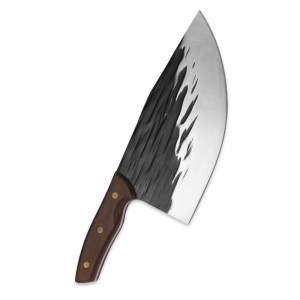
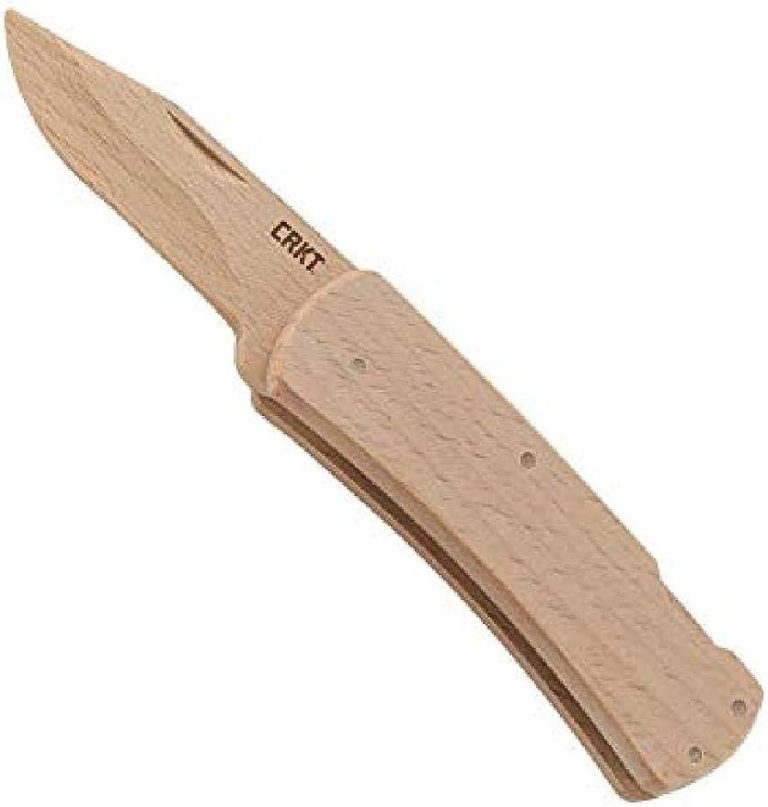

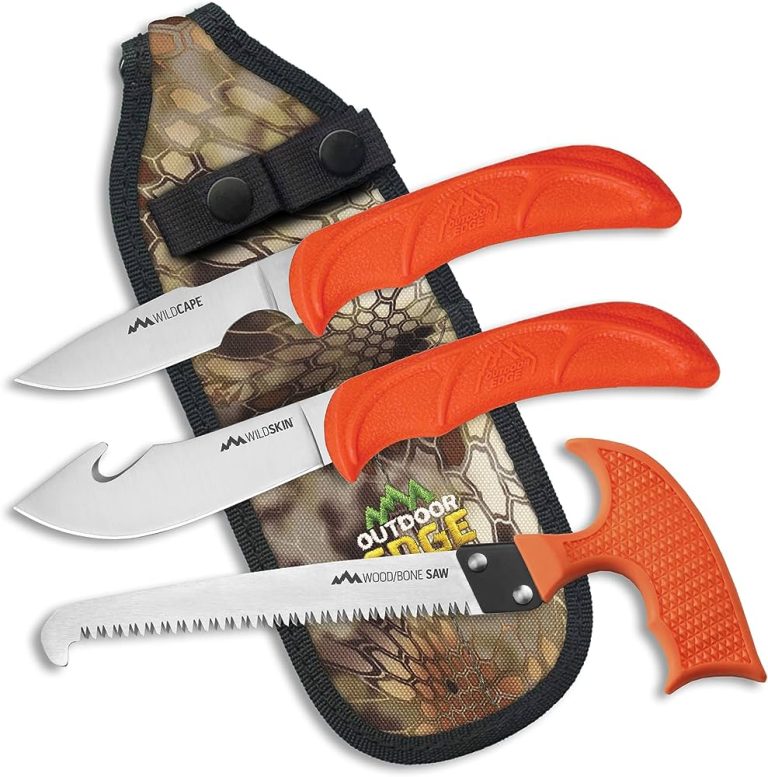
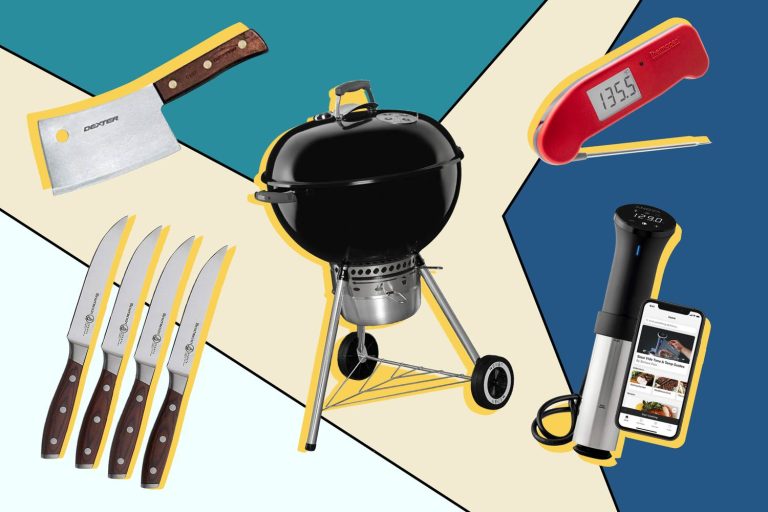
Good post I liked
Thank you
I’m extremely impressed with your writing skills and also with the
layout on your weblog. Is this a paid theme or did you customize it yourself?
Either way keep up the excellent quality writing, it is
rare to see a great blog like this one these days.
We stumbled over here coming froom a different web page and
thought I might as well check things out. I like what I see so now i am following you.
Look forward to exploring your web page again.
Feel free to visit myy site :: trail walkk – http://oeirastrail.com/ –
Great thank you i will visit your site
Hey there just wanted to give you a quick heads up.
The text in your article seem to be running off the screen in Opera.
I’m not sure if this is a formatting issue or something to do with browser compatibility but I figured I’d post to
let you know. The design and style look great though!
Hope you get the problem resolved soon. Kudos
Great web site. Plenty of useful info here. I’m sending it to some pals ans also sharing
in delicious. And certainly, thank you in your effort!